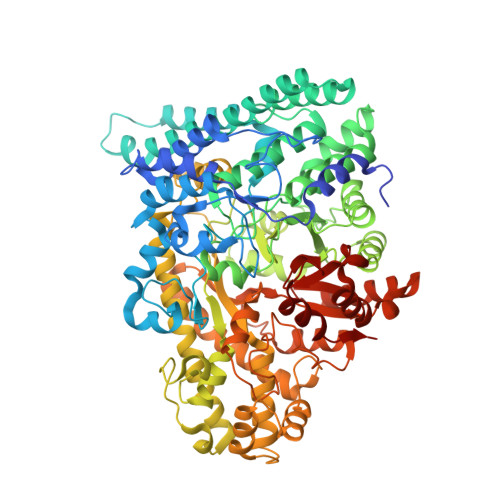Two radical-dependent mechanisms for anaerobic degradation of the globally abundant organosulfur compound dihydroxypropanesulfonate.
Liu, J., Wei, Y., Lin, L., Teng, L., Yin, J., Lu, Q., Chen, J., Zheng, Y., Li, Y., Xu, R., Zhai, W., Liu, Y., Liu, Y., Cao, P., Ang, E.L., Zhao, H., Yuchi, Z., Zhang, Y.(2020) Proc Natl Acad Sci U S A 117: 15599-15608
- PubMed: 32571930
- DOI: https://doi.org/10.1073/pnas.2003434117
- Primary Citation of Related Structures:
6LON - PubMed Abstract:
2( S )-dihydroxypropanesulfonate (DHPS) is a microbial degradation product of 6-deoxy-6-sulfo-d-glucopyranose (sulfoquinovose), a component of plant sulfolipid with an estimated annual production of 10 10 tons. DHPS is also at millimolar levels in highly abundant marine phytoplankton. Its degradation and sulfur recycling by microbes, thus, play important roles in the biogeochemical sulfur cycle. However, DHPS degradative pathways in the anaerobic biosphere are not well understood. Here, we report the discovery and characterization of two O 2 -sensitive glycyl radical enzymes that use distinct mechanisms for DHPS degradation. DHPS-sulfolyase (HpsG) in sulfate- and sulfite-reducing bacteria catalyzes C-S cleavage to release sulfite for use as a terminal electron acceptor in respiration, producing H 2 S. DHPS-dehydratase (HpfG), in fermenting bacteria, catalyzes C-O cleavage to generate 3-sulfopropionaldehyde, subsequently reduced by the NADH-dependent sulfopropionaldehyde reductase (HpfD). Both enzymes are present in bacteria from diverse environments including human gut, suggesting the contribution of enzymatic radical chemistry to sulfur flux in various anaerobic niches.
Organizational Affiliation:
Tianjin Key Laboratory for Modern Drug Delivery & High-Efficiency, Collaborative Innovation Center of Chemical Science and Engineering, School of Pharmaceutical Science and Technology, Tianjin University, 300072 Tianjin, China.

















